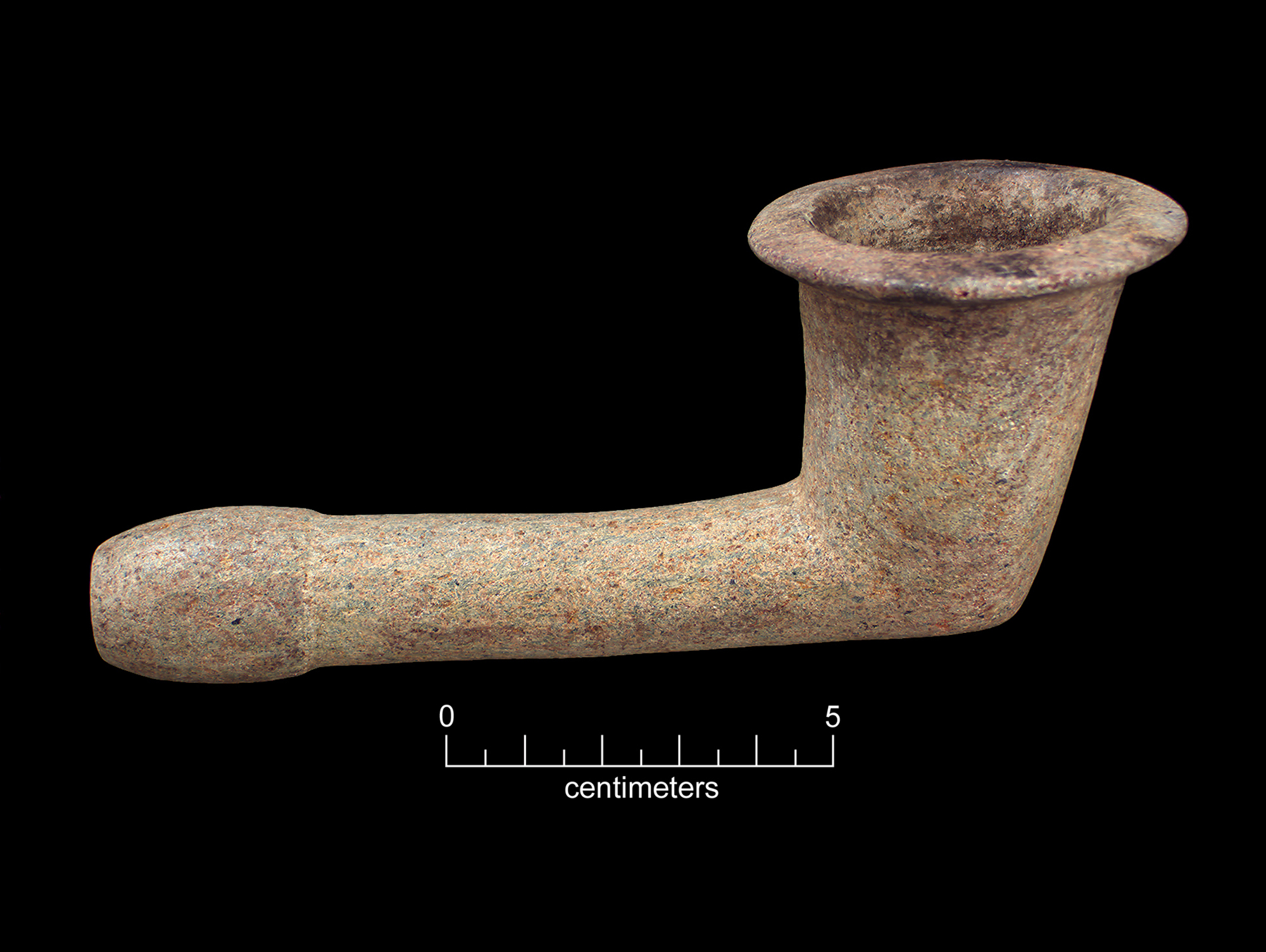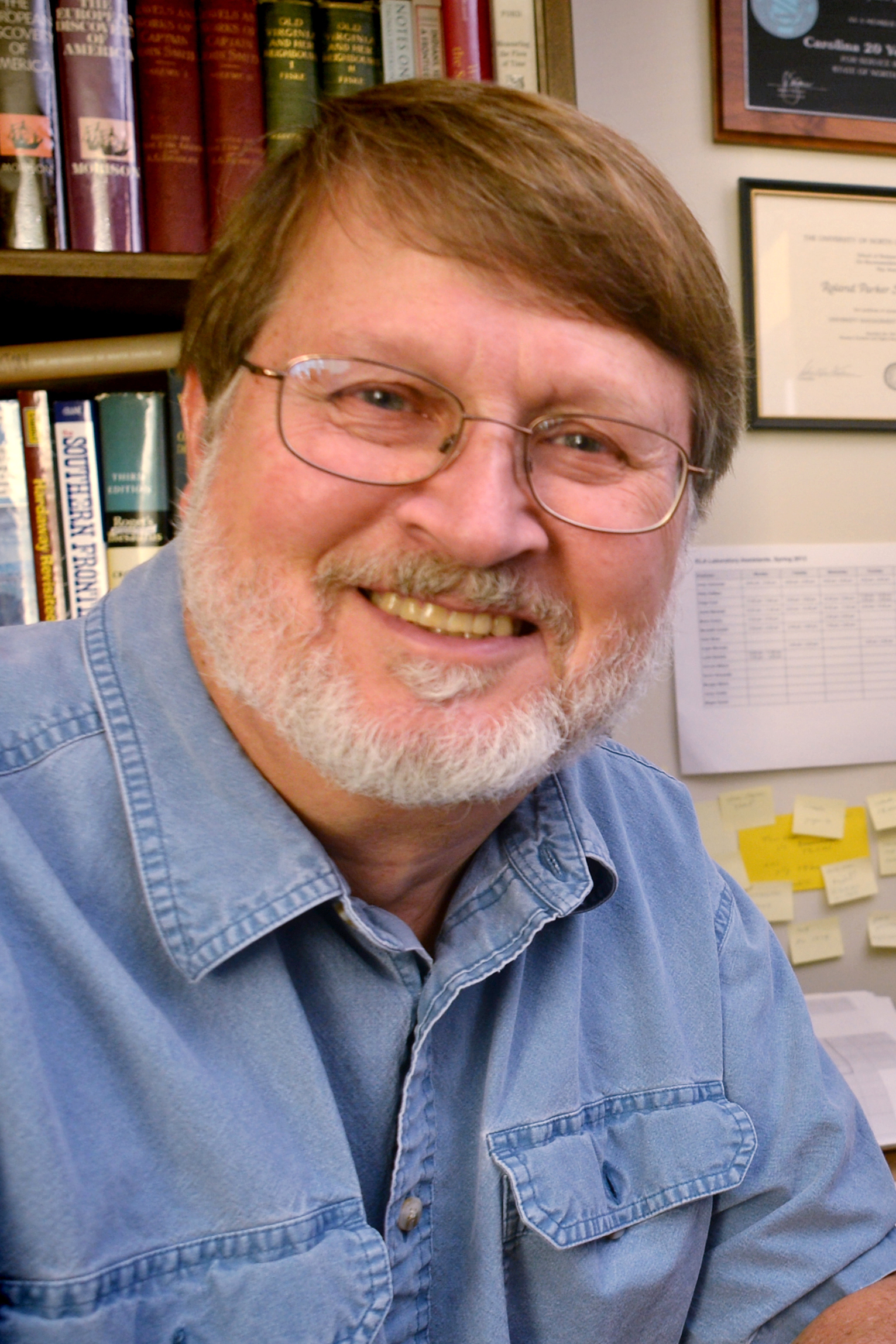Finally, a Fitting Museum for the Ancients
Posted on March 12, 2020
A stone pipe from Macon County, A.D. 1600, viewable on the Virtual Museum of North Carolina Archaeology website. (Virtual Museum of N.C. Archaeology)
Vin Steponaitis and Steve Davis ’74 have a combined 69 years in archaeological research at the University.
Now, they have a museum.

Steponaitis
Since 1939, the Research Laboratories of Archaeology has gathered more than 8 million artifacts and is the center of research for the state. Davis remembers stumbling into the labs’ exhibit space in Person Hall when he was an undergraduate. A more recent public viewing in the basement of Alumni Building was similarly underpublicized and inadequate in every respect.

Davis
By the time Ancient North Carolinians: A Virtual Museum of North Carolina Archaeology opened for business in November, its founding supervisors had long since given up on brick-and-mortar display space.
“In a way, this is actually better,” Davis said. “It can reach a lot of people who wouldn’t have the opportunity to come here.”
Welcome to ancientnc.web.unc.edu. Pictures and descriptions of artifacts thousands of years old — some of which you can spin around and examine from every angle with 3D technology; lesson plans for schoolteachers; travel guides to archaeological sites in the state.
It starts with a statement that is not walking-around knowledge for a lot of folks: “People have lived in North Carolina for at least 15,000 years.”

Engraved stone pipe from Halifax County, A.D. 1400–1600. (Virtual Museum of N.C. Archaeology)
Steponaitis, professor of anthropology, and Davis, associate director of the Research Labs of Archaeology and an adjunct anthropology professor, explained the site was designed to fight the idea that archaeology “is always somewhere else.”
Let’s get the “dry as dust” thing out of the way. What’s important about North Carolina’s ancient past?
Steponaitis: A lot of people think archaeology is about digging up dinosaurs — it’s about the ways people lived in the past. North Carolina had the largest Indian population east of the Mississippi River. Archaeology is a part of the national identity in Latin America. Mexicans are proud of the Aztecs, in Peru they’re proud of the Incas, in Europe they talk about the Greeks and Romans. The archaeological cultures here are not part of our national identity.
What’s been the reaction to the “opening” of the museum?
Steponaitis: I think a lot of people are surprised to know that there’s archaeology here. The history that’s taught in schools goes back to the first settlers, and then it sort of takes a left turn across the Atlantic and people learn about the Greeks and the Romans and the Egyptians, and it’s not until fairly recently that mention of archaeology has gotten into the curriculum of the schools. But even that isn’t very consistent. [In] the United States, including North Carolina, most people really know very little about the archaeology of where they live. And one of the goals of this was to sort of bring the idea that archaeology isn’t something that is only in Egypt or only in Mexico or only in the Southwest.
What is your hope for its impact on curriculum in the state’s schools?
Steponaitis: Our inspiration for this was a website that was developed about 10 years ago in the state of Texas (texasbeyondhistory.net). They were getting in excess of 9 million page views a year, and the frequency tracked the school year exactly. If you Google anything having to do with the archaeology of Texas, the first thing that’ll come up is the page about that in Texas Beyond History. Our hope is it won’t be long before the same thing happens here.

Stone ear discs from Montgomery County, A.D. 1150–1350. (Virtual Museum of N.C. Archaeology)
Back in the late ’90s, we published in a book a set of lesson plans called Intrigue of the Past designed for North Carolina classrooms and the standard course of study. We know that archaeology will never be a subject in and of itself in the course of study, but what these lesson plans allow us to do is allow teachers to bring archaeology in to teach other subjects.
Turning back to your work at home, periodically you have excavated on the older parts of the campus. What’s left that you’d like to do?
Davis: We’ve been having discussions about how to develop a more regular campus archaeological program. We’re interested in the area behind the current president’s house. One reason is because there you’re likely to find a domestic situation that almost certainly relates to slaves. Both [UNC presidents David] Swain and [Joseph] Caldwell owned slaves. Besides the written record, there’s also a material record, not as obvious. When we did our first excavation at Graham Memorial we found a dime that had been pierced to be worn. We don’t know that it was worn by a slave, but this was a fairly common practice among slaves. We’ve found evidence of a lot of toys. This is not a place where you would expect toys of small children except children of faculty or children of servants or slaves. I think there are various avenues like that where we can identify a material record that’s likely associated with the enslaved population beyond just the public works where slaves were used for heavy labor.
— Vin Steponaitis
Thanks for reading the Carolina Alumni Review
Carolina Alumni members, sign in to continue reading.
Not yet a member? Become one today.
